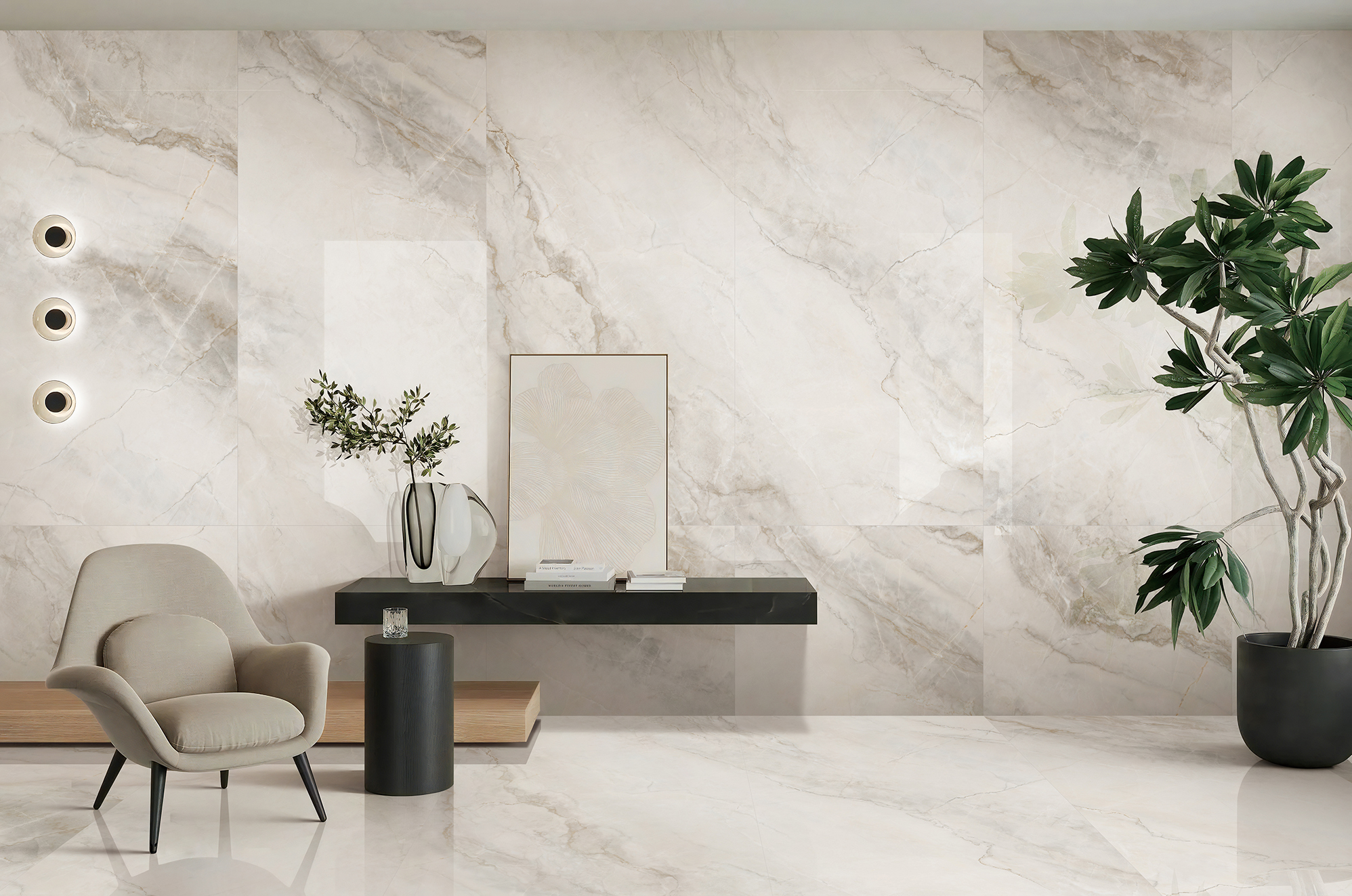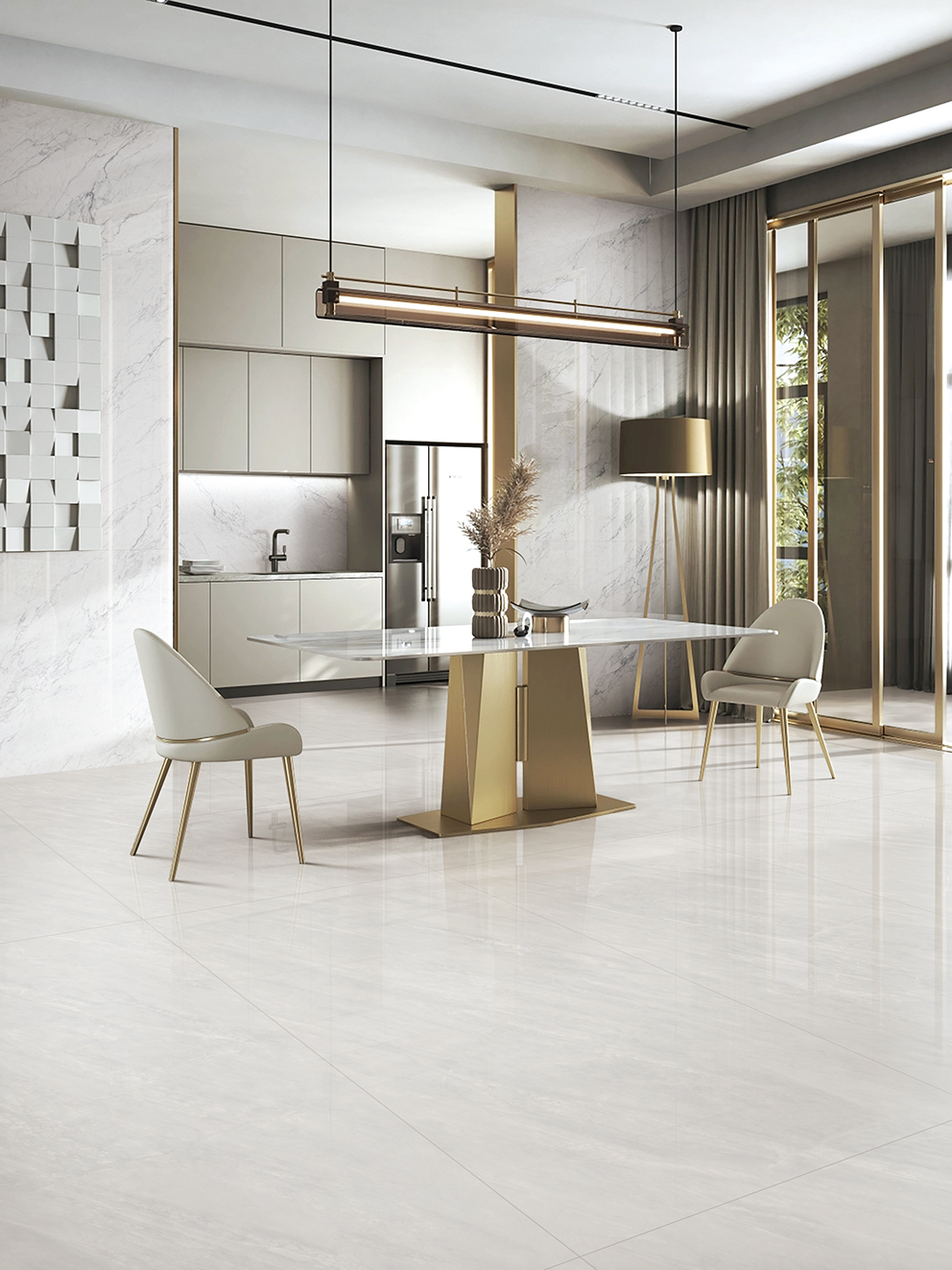
How to distinguish the quality of ceramic tiles?
Ceramic tiles are a very important material for home decoration. YUEHAIJIN. Trading provides you with a guide on how to choose a good ceramic tile. Tiles are mainly selected through simple methods such as “looking, weighing, listening, piecing, and trying”! The specific introduction is as follows:
1. Watching
Mainly check if there are black spots, bubbles, pinholes, cracks, scratches, color spots, missing edges, corners, and other surface defects on the surface of ceramic tiles! The quality of bricks with many defects is relatively poor!
In addition to checking for surface defects such as black spots, bubbles, pinholes, cracks, scratches, color spots, missing edges, corners, etc. on the surface of vitrified bricks, attention should also be paid to whether there are defects such as missing throwing or grinding. No matter what brand of product it is, the embryo body should have the brand mark of the ceramic tile. Check the bottom embryo trademark mark, and products produced by legitimate manufacturers should have clear product trademark marks on the bottom embryo. If there are no or particularly vague products, it is recommended to choose carefully.
2. Weigh in the hand
It’s about weighing the weight and testing the texture of the tiles. For products of the same specification and thickness, high-quality and high-density tiles have a heavier texture. Conversely, inferior products have a lighter texture. The quality of ceramic tiles is not directly related to their thickness, but mainly depends on their density.
3. Listening
By tapping on tiles and listening to sound, identify the quality of tiles. Wall tiles or small size tiles. Generally, one hand is used to separate the five fingers, pull up the tile, and the other hand is used to tap the tile face. If the sound emitted has a metallic texture, the quality of the tile is better. If there is no metallic texture sound, the quality of the tile is worse
4. Piece
Assemble products of the same specification and model, and randomly take them out for assembly. Through this step, you can check the size, flatness, and rightness of the ceramic tiles in three aspects. Take out two products of the same model and place them on a horizontal surface. Use the tips of both hands to slide back and forth along the edge of the ceramic tile. If there is no obvious feeling of stagnation when passing through the sealing area of the ceramic tile, it indicates that the size of the ceramic tile is relatively good and the error is small. The smaller the size error, the better the laying effect of the ceramic tile! On the contrary, if there is a noticeable feeling of lag in the hands of the tiles, it indicates that the size error of the tiles is large and will affect the laying effect.
5. To be try
Mainly aimed at the anti slip problem of floor tiles. For floor tiles, the materials are mainly divided into two types: vitrified and glazed. For the anti-skid problem of tiles nowadays, the common practice is to add water to the tile surface and then step on it to see if it is slippery. This practice is actually not completely appropriate, because some ceramic tiles, especially vitrified tiles, will feel more involved after adding water. This principle is similar to adding water between glass, if you want to lift the glass, It is difficult to find because the water squeezes out the air in the middle, making the brick and shoe closer to each other, making it feel more foot friendly. However, some vitrified bricks feel smoother without water added. Our suggestion is to try both steps with and without water.



